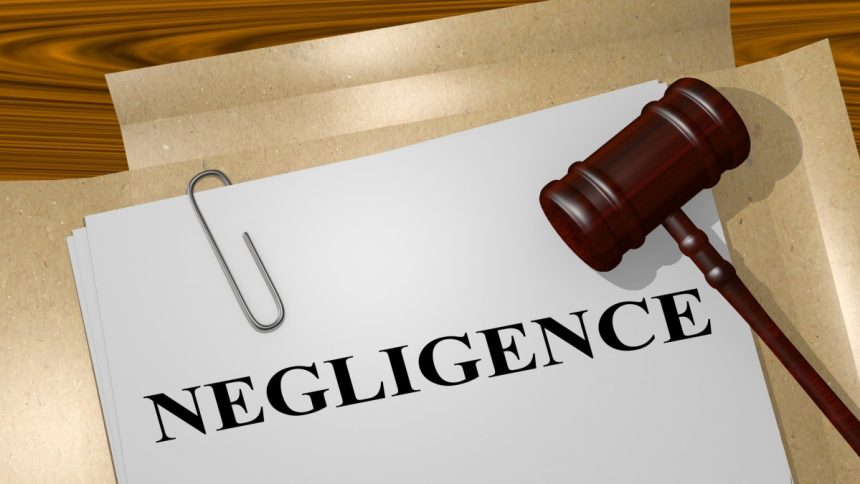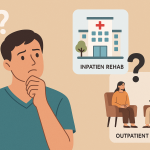Negligence is a fundamental concept in personal injury law, and understanding its core elements can empower individuals to protect their rights. The four elements of negligence are duty, breach, causation, and damages. Each element serves as a crucial piece in proving a negligence claim, setting the groundwork for legal accountability.
First, there must be a duty of care owed by one party to another. This duty varies depending on the relationship between the parties and the situation at hand. If this duty is breached, it can lead to legal repercussions. Each of these elements must be proven to establish a credible negligence claim, making them essential for anyone involved in related legal disputes.
Fundamentals of Negligence
The fundamentals of negligence are critical in understanding liability in legal contexts. It’s essential to grasp the definition and the legal framework in which negligence operates to effectively navigate or litigate these cases.
Definition of Negligence
Negligence occurs when an individual or entity fails to exercise reasonable care, resulting in harm or damage to another party. The core components are duty, breach, causation and damages.
A duty of care is a legal obligation requiring adherence to a standard of reasonable care while performing any acts that could foreseeably harm others. A breach occurs when this standard of care is violated.
Causation links the breach directly to the harm experienced. Finally, the harmed party must demonstrate that actual damages resulted from this breach.
Legal Framework for Negligence
Negligence is typically addressed within civil law. Personal injury cases frequently revolve around proving the four components mentioned earlier. The burden of proof lies on the plaintiff, who must convince the court of each element’s presence.
Often, negligence attorneys play a pivotal role. They gather evidence, such as witness statements and expert testimonies, to build a strong case. Case law and statutes provide guidelines on how courts interpret and apply negligence principles.
Jurisprudence varies by jurisdiction, impacting how negligence claims are adjudicated. Understanding the local legal framework is vital for both plaintiffs and defendants in negligence suits.
Elements of Negligence
In negligence cases, four primary elements must be proven for a claim to be successful: duty of care, breach of duty, causation, and damages.
Duty of Care
Duty of care refers to the legal obligation to avoid actions or omissions that could foreseeably harm others. This obligation can arise in various situations, such as between doctors and patients, drivers and pedestrians, or employers and employees. Whether a duty of care exists often depends on the relationship between the parties and the circumstances of their interaction.
Breach of Duty
A breach of duty occurs when an individual fails to meet the standard of care required. This failure can happen through actions, like running a red light, or through omissions, such as not repairing a hazardous condition. Determining a breach requires showing that the defendant acted unreasonably under the circumstances.
The courts often use the “reasonable person” standard to assess whether the defendant’s behavior was negligent. If the conduct deviates significantly from what an average person would do, it is likely considered a breach. Proving a breach is essential for liability.
Causation
Causation connects the breach of duty to the harm suffered by the plaintiff. This element has two components: actual cause and proximate cause. Actual cause, or “cause in fact,” asks whether the harm would have occurred “but for” the defendant’s actions. Proximate cause considers whether the harm was a foreseeable result of the defendant’s behavior.
Causation requires a clear link between the defendant’s conduct and the injury. Without this link, the defendant cannot be held legally responsible. The plaintiff must show that the breach directly led to their damages, which reinforces the need for strong evidence.
Damages
Damages refer to the compensation sought by the plaintiff for the harm caused. These can include economic damages like medical bills and lost wages, and non-economic damages such as pain and suffering. The purpose is to restore the injured party to their prior condition, as much as possible.
Calculating damages involves considering the extent and impact of the injury. Courts examine the evidence to determine an appropriate award. The plaintiff must provide proof of their losses, making documentation and expert testimony crucial in these cases.

Establishing the Duty of Care
Establishing the duty of care involves proving that a defendant owed a certain level of care to the plaintiff. This duty can vary depending on the context and relationships involved.
Reasonable Person Standard
The reasonable person standard is a legal benchmark used to determine if the defendant acted with the level of care that an ordinary person would in similar circumstances.
A defendant is compared to this hypothetical reasonable person to assess their actions. If they fail to meet this standard, they may be found negligent. Courts consider what someone with ordinary prudence would do, factoring in the situation and environment.
Duty in Specific Relationships
Certain relationships impose specific duties of care, which can affect legal outcomes. For example, doctors, teachers, and employers have higher standards because of their roles and responsibilities.
In these cases, the specific relationship dictates the level of care. Doctors are expected to provide medical care consistent with professional standards, while employers must ensure a safe working environment.
Proving Breach of Duty
An essential component in a negligence case is establishing that there was a breach of duty. This involves showing that the defendant failed to meet the standard of care expected in the given situation, backed by concrete evidence and appropriate standards of proof.
Evidence of Breach
To prove a breach of duty, evidence must clearly show how the defendant’s actions deviated from what is considered reasonable. Eyewitness testimony, expert opinions, and documents such as emails or logs can serve as critical pieces of evidence.
Photographs or video footage are especially useful in illustrating the breach. These can visually demonstrate the situation and the defendant’s actions, providing tangible proof that supports the claim.
Standards of Proof
Standards of proof specify the level of certainty needed to establish a breach of duty in court. In negligence cases, the standard is typically a “preponderance of the evidence,” meaning it must be more likely than not that the breach occurred.
This standard contrasts with criminal cases, where the proof must be “beyond a reasonable doubt.” To meet the preponderance standard, the evidence presented should tip the scale slightly in favor of the claimant, making it the more probable conclusion.
Causation and Damages
Causation links the defendant’s actions to the plaintiff’s injury, while damages provide compensation. Understanding these components is essential to establish a negligence claim.
Actual Cause
Actual cause, also known as “cause in fact,” determines if the defendant’s actions directly led to the plaintiff’s harm. To prove this, courts often apply the “but-for” test. This asks whether the injury would have occurred but for the defendant’s conduct.
For instance, a Beverly Hills personal injury lawyer might argue that a driver’s negligence directly caused a client’s injuries in a car accident. If the injury would not have happened without the defendant’s actions, then actual cause is established.
Proximate Cause
Proximate cause limits the scope of a defendant’s liability to those harms that were foreseeable. This means the harm must be a natural result of the defendant’s conduct, without any significant intervening causes.
A negligence attorney must show that the defendant could reasonably anticipate that their actions would cause harm. If a pedestrian is hit by a car, the driver’s negligence is the proximate cause if the injury was a foreseeable result of reckless driving.
Types of Damages
Damages in negligence cases typically fall into three categories: compensatory, punitive, and nominal. Compensatory damages aim to reimburse the plaintiff for actual losses, including medical expenses, lost wages, and pain and suffering.
Punitive damages, though less common, punish particularly egregious behavior and deter similar conduct. Nominal damages acknowledge a legal wrong occurred without substantial loss.
Legal Representation in Negligence Cases
Legal representation plays a critical role in navigating negligence cases, ensuring the right support and expertise to maximize the chance of a successful outcome.
Role of a Negligence Attorney
A negligence attorney provides essential assistance by evaluating the case’s merits, gathering evidence, and identifying liable parties. They negotiate with insurance companies and represent clients in court, handling all necessary legal documentation and filings.
A Beverly Hills personal injury lawyer, for instance, would be well-versed in California’s specific negligence statutes, bringing a significant advantage to local clients. Their expertise ensures clients’ rights are maintained throughout the legal process.
Finding the Right Lawyer
Selecting the right negligence attorney involves careful consideration of several factors. Potential clients should seek attorneys with specialization in personal injury law, particularly those with a strong track record in negligence cases.
Experience in local jurisdiction is crucial. A Beverly Hills personal injury lawyer, familiar with local courts and regulations, can offer more nuanced and effective representation.
Effective communication, a transparent fee structure, and a proactive attitude are key traits to look for when choosing a negligence attorney. These factors help ensure that the legal representation aligns with the client’s expectations and needs.
Lynn Martelli is an editor at Readability. She received her MFA in Creative Writing from Antioch University and has worked as an editor for over 10 years. Lynn has edited a wide variety of books, including fiction, non-fiction, memoirs, and more. In her free time, Lynn enjoys reading, writing, and spending time with her family and friends.















